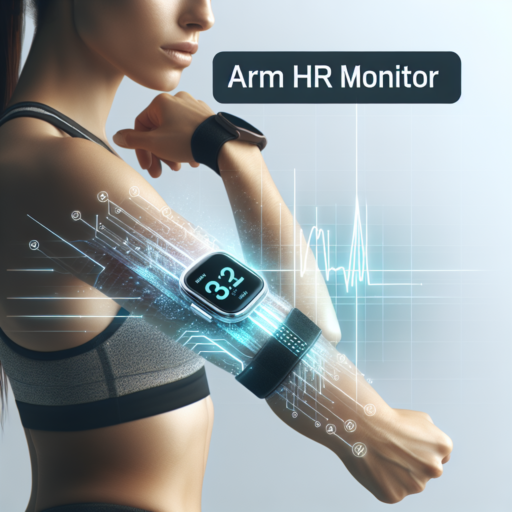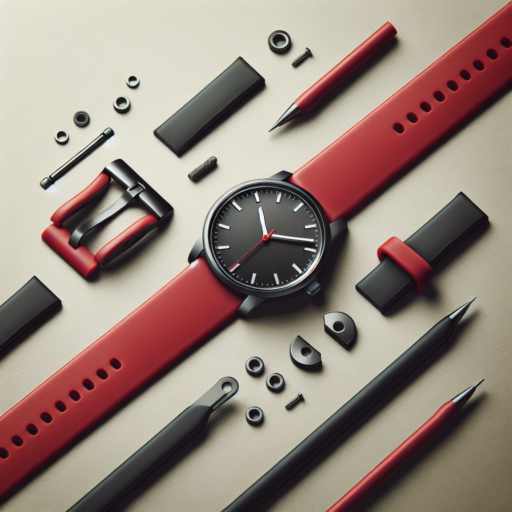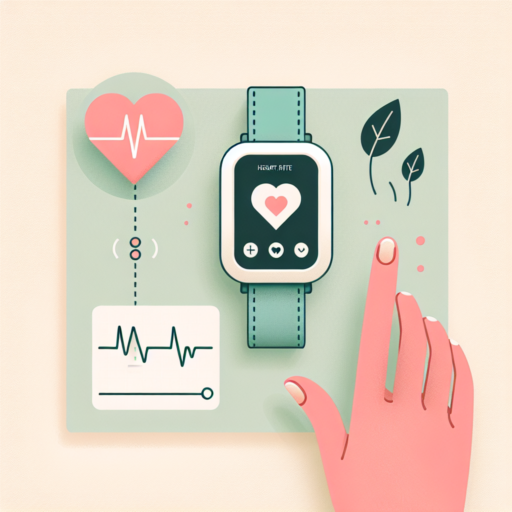What is an Arm HR Monitor and How Does it Work?
An Arm HR Monitor, short for Arm Heart Rate Monitor, is a specialized device designed to measure and monitor the heart rate of an individual through sensors placed on the arm. Unlike traditional chest strap heart rate monitors, these devices offer convenience and comfort, allowing users to track their heart rates without needing to wear a constricting strap around their chest.
The working mechanism of an Arm HR Monitor involves the use of optical heart rate technology. This technology employs LEDs to shine light onto the skin, allowing the sensor to detect the blood flow and calculate the heart rate based on changes in light absorption. This process, known as photoplethysmography (PPG), is crucial for delivering accurate heart rate measurements in real-time.
Moreover, advancements in technology have enhanced the functionality and reliability of Arm HR Monitors, making them a popular choice for athletes and fitness enthusiasts. These monitors not only provide precise heart rate readings but also offer features such as activity tracking, sleep monitoring, and even notifications for irregular heartbeats. The integration of these devices with smartphones and fitness apps further elevates the user experience, presenting data in an easily understandable format.
Top Benefits of Using an Arm HR Monitor for Your Workouts
Tracking your heart rate during workouts isn’t just a fad; it’s a crucial aspect of getting the most out of your exercise regimen. An arm HR monitor stands out as a convenient, accurate tool, offering several advantages over other types of heart rate monitors. Understanding these benefits can help you optimize your fitness strategy for better results and a healthier lifestyle.
Enhanced Accuracy and Comfort
One of the primary advantages of using an arm heart rate monitor is its enhanced accuracy. Unlike traditional chest straps, which some find uncomfortable and intrusive, arm monitors use advanced optical sensor technology to deliver precise heart rate readings. This means you can focus on your workout without the distraction of an uncomfortable fit, ensuring that the data you get is both accurate and reliable.
Convenience and Ease of Use
Another significant benefit is their ease of use and convenience. Arm HR monitors are designed for simplicity, allowing you to just strap on and start your workout. There’s no need for wetting sensors or ensuring a perfect fit under your clothes as required by chest straps. This straightforward approach not only saves time but also improves the likelihood that you’ll use it consistently, which is key to tracking and improving your fitness over time.
Real-Time Feedback for Training Optimization
Lastly, the benefit of real-time feedback cannot be overstated. Arm HR monitors often connect to smartphone apps, providing instant data on your heart rate, calories burned, and other workout metrics. This immediate insight allows for on-the-fly adjustments to your workout intensity, ensuring you’re always training within your optimal heart rate zones. It’s a game-changer for anyone looking to efficiently meet their fitness goals, from casual gym-goers to serious athletes.
How to Choose the Best Arm HR Monitor for Your Fitness Goals
Choosing the right arm Heart Rate (HR) monitor to match your fitness goals can significantly improve your training efficiency and motivation. When searching for the best arm HR monitor, it’s crucial to consider several key factors that align with your exercise habits and objectives.
Understand the Types of Arm HR Monitors
The market offers a variety of HR monitors, each with its unique features and mechanisms. Some use optical sensor technology for convenient, strap-free monitoring directly from your wrist or forearm. Understanding the differences and capabilities of each type can guide you to a model that compliments your workout routine and provides the most accurate data for your needs.
Consider the Features That Matter to You
Accuracy is paramount when it comes to HR monitors. Look for devices well-reviewed for their precision in tracking heart rate, especially during intensive workouts. Connectivity options are also vital; ensure the monitor pairs seamlessly with your smartphone or fitness apps to easily track your progress. Additionally, evaluate the battery life; a longer-lasting monitor means less frequent charging, keeping you focused on your fitness goals without interruption.
Think About Comfort and Ease of Use
An arm HR monitor should be comfortable enough to wear throughout your entire workout without causing any distraction or discomfort. Look for adjustable straps that ensure a secure fit on your arm. Ease of use is another critical factor; navigating the device should be straightforward, allowing you to spend more time moving and less time setting up.
By taking the time to research and consider these aspects, you’ll be well on your way to finding the arm HR monitor that best suits your fitness goals, enhancing your training effectiveness and enjoyment.
No se han encontrado productos.
Comparing Arm HR Monitor vs. Chest Strap: Which is More Accurate?
When it comes to tracking heart rate, athletes and fitness enthusiasts are often caught in a debate between the arm HR monitor and the chest strap. These devices have varied in popularity over the years, and understanding their accuracy can help users make informed decisions. Accuracy in heart rate monitoring is crucial for training effectiveness, safety, and personal health insights.
The arm HR monitor, often worn on the wrist, utilizes optical sensors to measure heart rate. This technology, known as photoplethysmography (PPG), detects blood volume changes in the microvascular bed of tissue. Its placement on the body makes it highly convenient and comfortable for continuous monitoring. However, factors such as improper fit, movement artifacts, and changes in blood flow can influence its accuracy.
On the other hand, the chest strap heart rate monitor employs electrical signals to detect the heart’s activity, similar to an electrocardiogram (ECG). As it is worn closely around the chest, right below the breastplate, it is positioned closer to the heart. This strategic placement allows the chest strap to provide readings that closely mirror the heart’s actual activity, making it highly regarded for its precision. Yet, for some, the chest strap may be perceived as intrusive or uncomfortable during extended periods of use.
Step-by-Step Guide: Setting Up Your Arm HR Monitor for Maximum Accuracy
Setting up your arm HR monitor correctly is crucial for obtaining the most accurate heart rate readings during your workouts. The process might seem straightforward, but ensuring maximum accuracy requires attention to detail. In this guide, we will walk you through each necessary step to optimize your arm HR monitor’s performance.
Choosing the Right Placement
The placement of your arm HR monitor significantly affects its accuracy. For optimal results, the HR monitor should be worn on the upper arm, just above your elbow. This area provides more consistent and reliable readings compared to other parts of your arm. Make sure the device is snug yet comfortable, avoiding any movement during exercise that could disrupt its readings.
Securing the Fit for Maximum Accuracy
- Wear It Tight: The HR monitor should fit tightly around your arm. A loose fit can lead to inaccurate readings due to the device moving or not being in full contact with your skin.
- Skin Contact: Ensure there’s no fabric or objects between the HR monitor and your skin. Direct contact is essential for accurate readings.
- Adjust as Needed: Your arm’s size can change depending on various factors, including exercise. Regularly check the fit and adjust the tightness as necessary to maintain accuracy.
By following these steps carefully, you set up your arm HR monitor for maximum accuracy. This ensures that you have reliable heart rate data to optimize your training sessions, making every workout count. Remember, consistent accuracy not only helps in monitoring your fitness progress but also in preventing overtraining and injuries. Paying attention to the proper setup and fit of your arm HR monitor is a small but crucial part of achieving your fitness goals.
The Latest Advancements in Arm HR Monitor Technology
The world of fitness technology is constantly evolving, and one of the most notable areas of advancement is in the realm of arm HR (Heart Rate) monitors. These devices, designed to be worn around the arm, offer athletes and fitness enthusiasts an alternative to traditional chest straps and wrist-based trackers. The latest models come equipped with an array of innovative features aimed at providing more accurate readings, better user comfort, and enhanced connectivity options.
Improved Sensor Accuracy
One of the key advancements in arm HR monitor technology is the significant improvement in sensor accuracy. The latest devices utilize advanced optical sensors that can more precisely detect blood flow changes in the forearm. This method, known as photoplethysmography (PPG), coupled with sophisticated algorithms, ensures that the readings are nearly as accurate as those from chest strap monitors, traditionally considered the gold standard. These improvements mean users can rely on their arm HR monitors for critical training data and health metrics without worrying about compromised accuracy.
Enhanced Comfort and Design
An equally important advancement is in the design and comfort of these arm monitors. Manufacturers have recognized the importance of wearable comfort, especially for devices meant to be worn during prolonged periods of physical activity. The latest arm HR monitors feature lightweight, flexible materials that conform more comfortably to the wearer’s arm. Additionally, they boast slimmer profiles and improved strap designs that ensure the monitor stays secure without digging into the skin or causing irritation. This attention to comfort means that users are more likely to wear their monitors consistently, leading to better data collection and health monitoring over time.
Connectivity and Integration
Lastly, the advancements in connectivity features present in the latest arm HR monitors cannot be overlooked. These devices now offer seamless integration with a wide range of smartphones, fitness watches, and apps. Whether it’s for sharing data with a coaching app, integrating workouts with a health monitoring platform, or simply syncing with a smartphone for real-time alerts and updates, the new generation of arm HR monitors ensures that staying connected is easier than ever. The inclusion of Bluetooth Low Energy (BLE) technology in many models further enhances this connectivity, offering users a fast, efficient way to transfer data while conserving the device’s battery life.
7 Tips to Get the Most Out of Your Arm HR Monitor During Exercise
Understand Your Device
Before diving into the intensity of your workouts, it’s essential to familiarize yourself with the functionalities of your arm HR monitor. Each model has its unique features and settings. Spend time understanding these to effectively track your heart rate and other vital metrics during exercise.
Ensure Proper Placement
For accurate readings, the placement of your arm HR monitor is crucial. The device should be snug on your arm, positioned according to the manufacturer’s guidelines, typically just a few inches above your wrist. A secure fit prevents it from moving during exercise, ensuring consistent and reliable data.
Monitor Your Heart Rate Zones
Maximizing the benefits of your arm HR monitor involves paying close attention to your heart rate zones. These zones are key to understanding different intensity levels and how they impact your fitness goals. Regularly compare your HR readings against your target zones to adjust your workout intensity in real-time.
Utilize the Data
Don’t let the data collected by your arm HR monitor go to waste. Analyze your heart rate trends over time to identify patterns and make informed adjustments to your fitness routine. This ongoing analysis is pivotal in understanding your body’s response to various workouts and achieving your exercise objectives.
How to Maintain and Clean Your Arm HR Monitor for Longevity
Maintaining Your Arm HR Monitor
To ensure your arm heart rate (HR) monitor remains accurate and functional over years of use, regular maintenance is essential. Start by regularly checking the device for any signs of wear or damage, especially on the band and the sensor area. Replace any worn-out parts as recommended by the manufacturer to prevent inaccuracies in heart rate readings or potential skin irritation.
Cleaning Your Device
Keeping your HR monitor clean is crucial for both hygiene and functionality. After every use, wipe the sensor and band with a soft, damp cloth to remove sweat and other residues. Avoid using any harsh cleaning agents, as they can damage the sensor’s surface or degrade the band’s material. For a deeper clean, refer to the manufacturer’s instructions, since some monitors allow for the band to be rinsed under water.
Preventive Care for Enhanced Longevity
Aside from routine cleaning, small actions can significantly extend the life of your device. Avoid exposing the monitor to extreme temperatures and direct sunlight for prolonged periods, as this can damage the electronics and battery. Also, ensure the device is stored in a dry place when not in use, particularly if you sweat heavily or use it in rainy conditions. This prevents moisture from seeping into the electronics, which could lead to malfunctions.
Understanding the Data: What Your Arm HR Monitor Tells You About Your Health
Your arm HR monitor, more than just a fitness gadget, is a window into your physical well-being. When you start to interpret the data it collects, you can unlock insights about your health that go beyond simple heart rate numbers. This article explores how to make sense of the information your device provides, helping you to understand your body better.
Deciphering Heart Rate Variability (HRV)
One key metric to pay attention to is your Heart Rate Variability (HRV). HRV measures the variation in time between each heartbeat, and it’s a powerful indicator of your physical fitness and overall health. A higher HRV suggests a healthier, more resilient heart, while lower values may indicate stress, fatigue, or even potential health issues. By monitoring changes in your HRV, you can adjust your training, rest, and recovery to optimize your health.
Understanding Resting Heart Rate (RHR)
The Resting Heart Rate (RHR) is another vital piece of data your arm HR monitor provides. It’s the number of times your heart beats per minute when you’re at rest. Generally, a lower RHR is associated with better cardiovascular fitness and a higher level of heart health. Observing trends in your RHR can help you gauge how your fitness levels are improving over time or if there might be cause for concern that warrants a deeper look.
Grasping these aspects of your health data can transform how you view your fitness journey. By keeping an eye on HRV and RHR, among other metrics, you’ll not just chase fitness goals but understand the nuances of your body’s responses to different stresses and stimuli. This insight is invaluable for tailoring your workouts and lifestyle to enhance your health outcomes significantly.
Real User Reviews: The Best Arm HR Monitors on the Market in 2023
In 2023, the quest for the ultimate arm heart rate (HR) monitor has become more targeted, with user reviews guiding the way towards making the best purchase decisions. Users are looking for devices that not only provide accurate heart rate readings but also seamlessly integrate with their active lifestyles. Amongst the myriad of options available, a few products have consistently risen to the top, affirmed by real user experiences and recommendations.
Garmin Fenix series stands out with its precision and reliability, as echoed in numerous user testimonials. Praised for its advanced features, including GPS tracking and long battery life, it’s a clear favourite for the tech-savvy athlete. Meanwhile, the Polar OH1 is commended for its versatility and comfort. Users appreciate its lightweight design and the ability to attach it to both arm and temple, offering flexibility in how they track their heart rate.
Another notable mention is the Wahoo TICKR FIT. Users have highlighted its standout feature of dual-band technology, ensuring connectivity with a wide range of devices. Its water-resistant design and impressive battery life have earned it high marks from individuals who engage in varied and rigorous exercise routines. User feedback consistently emphasizes the monitor’s comfort during extended wear and its accuracy in heart rate data collection.




